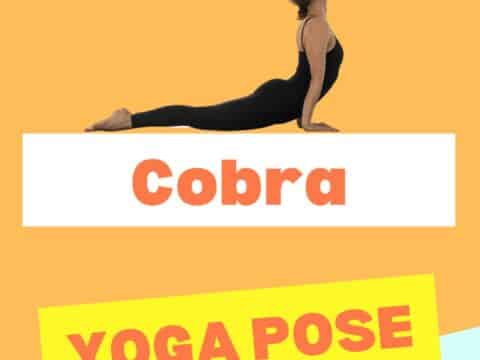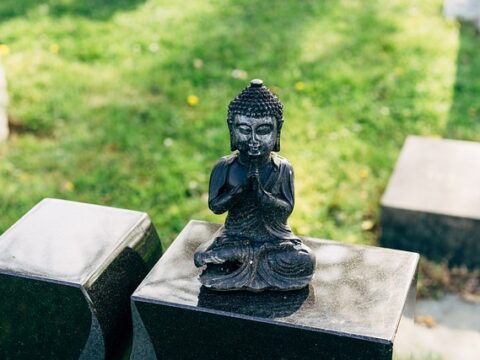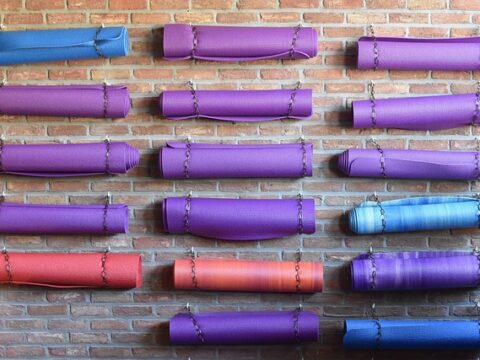It may surprise you to learn that toxins are not only found in air pollution and unhealthy foods.
Cleansing all areas of your life this spring will leave you feeling relieved, renewed and clear. In this article, you will find a simple action plan.
Podcast
Step 1: Adjust your diet
Cleansing in the spring helps get rid of winter, kapha, water and earth. It is recommended that we eat more cooked greens, drink detoxifying soups, and reduce our consumption of heavy, toxic foods as the new season begins.
These toxic foods include fried foods, saturated fats, dairy, sugar, soda, alcohol and grains. If you have eaten too much or partied too much, you should do a two-week detox to cleanse your body.
Drink warm liquids
To reduce kapha, drink only warm liquids during the day, starting with warm water in the morning. For example, nettle, dandelion, fennel and mint tea.
If you are cold, you can make ginger tea to warm you up. Steep fresh ginger in water for 20 minutes, then pour off the water and drink the tea.
Eat bitter foods
Herbal teas that contain bitter herbs can help cleanse your blood and liver. They relieve feelings of constipation and ease congestion. You can enjoy bitter greens both cooked and raw.
There are a few different vegetables you can choose from, such as endive, radicchio, bitter melon and dandelion greens.
Bitter foods are good for balancing your diet and your doshas. Bitter foods help balance your diet and your doshas.
Eat steamed vegetables and bone broth
Make a bone broth from chicken, beef or pork bones. You can freeze some of it to use later. There are several ways to enjoy this broth.
You can add vegetables to the broth and either make it into a puree or just sip the broth on the side while you eat your vegetables. You can steam different vegetables and eat a broth with them.
Choose a vegetable from each of the following families: the root family, the green family, the cruciferous family, and the bitter family. For example: carrots, broccoli, kale and endive.
As an alternative, you can also take a vegetarian “bone broth”.
Add honey to your warm water
According to Ayurveda, honey can help remove toxins from the body.
If you don’t have a serious imbalance with Pitta or Vata, or are not allergic to ragweed or honey, local raw honey can be a great way to naturally relieve allergies.
Allergens are given in small doses over time, which can eventually create immunity.
The best way to fight allergies is to start a few months before the season begins. In the morning, add 1/2 tablespoon of the honey to a warm (not hot) glass of water and drink it between 6 and 10 am.
Step 2: Cleanse your body
Exercise is the key to cleansing. Stagnation is death. You’ve probably heard this saying before. Start your day by getting in touch with nature. Take a walk in the woods or in the park.
As you cleanse your body, take the opportunity to cleanse your mind as well by focusing on slow, mindful movements and deep breathing.
Step 3: Declutter
The first step to new, healthier habits in taking time to reflect on your current patterns. Creating more space in your physical environment, such as in your home and on your phone, can help clear your mind.
Discard products
Throw away all old, chemically made cleaning products and switch to natural alternatives. Throw away expired makeup and medications.
Clean up contacts
Delete outdated contacts on your phone. Remove any apps and documents you no longer need from your electronic devices.
Clean up your home
Create a new place for everything you keep. Play music you like while you tidy up to make it more fun.
If you need assistance during the process, you can either hire a coach or ask a friend for help.
For many people, the appeal of a minimalist lifestyle is the idea of owning fewer things. People are interested in living a minimalist life because it means owning fewer things.
Declutter your thoughts
There is always something to change, even if you have a healthy lifestyle.
We all know what we want and what we need, we just need to listen to ourselves. So when you focus on cleaning, pay close attention to your own thoughts and needs.
This includes removing existing blocks and checking limiting beliefs with Theta Healing or coaching, for example.
Self-reflection
Follow these steps for self-reflection for a thorough mental detox:
Know yourself
When it comes to letting go, do you prefer to get rid of habits in one fell swoop or do you prefer a gradual change?
Should you give up caffeine altogether or reduce it gradually by switching to green tea? It will be much easier to make the necessary life changes if you know your personality type.
Figure out what you love
It would be wonderful if everything we came in contact with in our lives brought us joy and excitement.
You can apply this philosophy to your closet by getting rid of clothes you no longer wear, to your refrigerator by getting rid of expired food, to your friends by getting rid of toxic relationships, and even to your job by quitting a job you hate.
Separate yourself from foods, clothes, and people you are “allergic” to. Tune into your inner self, surround yourself with things you enjoy, and you will see yourself come to life.
Get rid of toxic habits
What are the consequences for you? What is the most toxic habit, thought, person or food in your life and what are the consequences for you?
Figure out what is hardest for one to stop, even though they know they should. This is the best place to start when trying to change things like late night snacking, talking on the phone too much, or a job you hate.
It is crucial to focus all of your energy on your top priority and find ways to either eliminate it or make it a lower priority in your life.
When you get rid of the main toxin, you will get a lot of energy back.
Detoxify self-talk
Do you ever catch yourself replaying past conversations in your head? It helps to take a moment in the morning after you wake up and at night before you go to bed to get clear with yourself.
When you are still and quiet, what do you hear that you would normally try to drown out with noise?
What are the top three thoughts that run through your mind each day? Write them down. Change your thoughts and the way you talk to yourself if you want to achieve your goals.
Clean up relationships
When you think about what is toxic in your life, you need to consider not only what you are consuming, but what (or who) is consuming you.
You need to think beyond what you eat when you consider what toxic is in your life.
It is important to eliminate what isn’t working. You need to recognize and evaluate the people in your life that are not good for you.
Journaling next to your yoga mat?
Detox can help you feel emotions and also inspire you. You can keep a journal near your yoga mat to help you recall any thoughts, feelings or ideas that arise during your practice.
Before you start meditating, sit down or lie down for at most five minutes. Let your breath flow freely through your body. Notice any tensions and let them go as you exhale.
As you relax, pay attention to what is happening in your body and mind. These changes can help you reach a deeper level relaxation.
Place your hands in Anjali Mudra when you are ready to move your body.
You can try doing a few rounds in your favorite sun salutation. You may feel less energetic after cleansing. Listen to your body and do what is best for you.
It’s okay to not do the sun salutation. You can skip the main sequence and just go straight to the restorative poses. This exercise should be done at least once per day for detox.

Yoga poses for detox support
Twisted Seat (Ardha Matsyendrasana)
Seated spinal twists are a great way to decompress your spine. They are also great for lower back pain, sciatica and open up the hips. You can practice them anywhere. You can even do them at work.
Twists seat require a grounded foundation, so use a block or blanket to support your sit bones. This will prevent your spine from rounding, which can be uncomfortable.
A seated twist is best performed with straight legs and a straight back. However, it is not recommended if you have knee, ankle or other injuries. You should consult a physician or physical therapist to discuss your options.
The twisting seat is a variation of the classic posture Maricyasana. It requires a solid foundation, an upper body stretch and five breaths on each side. After a few breaths, you can gently release the posture.
The most important thing in any seated twist is to keep your chest in a straight line. You can do this by tightening your abdominal muscles and rolling your shoulders back. A folded blanket can also help keep your hips properly aligned.
Corpse Pose (Savasana)
Corpse pose, also known as savasana, is a restorative yoga pose designed to relax the body, mind and spirit. It is a very important part of any yoga practice and a great way to end a practice. It helps the body and mind to rest and relax after a busy day.
It is a good idea to do a few rounds of corpse pose before bed. It helps the body and mind relax and promotes deep sleep.
When you first start doing the corpse pose, you may find it a little hard to get comfortable. You may fidget around or tense up. Make sure your feet and legs are comfortable before you try it. It’s also a good idea to use a prop.
You can put a bolster under your knees to support them when you lie down. This will take pressure off your hips and lower back. It can also be helpful to elevate your head and back. This will lift your mood and encourage the natural flow of your breath.
If you can’t bend your knees, use a rolled-up blanket or yoga belt to hold them in that position. If you have back injuries, you should do the corpse pose with your knees bent.
The corpse pose is a very simple yoga pose. It can be done by people of all ages. It is also easy to modify.
Intense Side Stretch (Parsvottanasana)
Intense side stretch or Parsvottanasana is a yogic pose that strengthens the hamstrings, hip flexors and abdominal muscles. It also helps with digestion. It opens the shoulders, opens the spine and deeply stretches the back. It is beneficial for runners who need to stretch tight hamstrings.
It can be done while sitting or standing. Support aids can also be used to make it more accessible to the yogi. The name comes from the Sanskrit words “parshva” and “vatta.”
Parsvottanasana helps yogis develop a sense of freedom and balance. It can help with a variety of problems such as headaches, menstrual cramps and digestive disorders.
It also teaches proper posture. It improves digestion, strengthens the abdominal muscles and stretches the spine. This yoga pose can be beneficial for all ages and is great for preparing for more advanced poses such as inverted triangle pose.
The Intense Side Stretch is a wonderful way to increase range of motion in the calf and lower back. It can also be incorporated into Peak Pose yoga sequences. It can be followed by a wide-legged forward bend or a warrior I pose.
High Lunge (Ardho bhujangasana)
If you’re looking for an exercise to build strength, increase endurance and improve balance, practice the high lunge. This variation of the classic pose works out your legs, shoulders and chest.
You need to lift your back leg while stretching your upper body. This stretch will help open up your hip flexors. You can also use aids like pillows to support your knees.
The high lunge is a great way to improve your balance while strengthening your hamstrings and building your core. It can also help relieve back pain. You can practice this pose longer or shorter, depending on your fitness level.
You should perform this pose on a comfortable mat, but there are tools to help you do it. You can place pillows or a blanket under your knees.
You can also try using a wall for support. You can also have a partner or a yoga instructor help you.
There are 65 different variations of the high lunge. You need to choose the best version for your body. The crescent high lunge is also called the three-legged downward looking dog. This is a great pose to improve balance while relieving pain in the thighs and shoulders.
It is important to remember that this is not an advanced yoga pose. It’s best to start with a gentle version. This will give you time to adjust. You can use props to help, but you should only engage in this if you are confident that you can master this pose.
Chair Pose (Utkatasana)
Utkatasana, also known as chair pose, is a yoga pose that is great for strengthening the entire body. It also offers holistic health benefits, especially for the respiratory system and diaphragm.
If you are a beginner, it is recommended that you practice the chair pose slowly. It is also important to keep your hands close to your body. It is best to use a rolled mat under your heels to make the pose more comfortable.
If you don’t have much experience with the chair pose, you can also do it with a yoga block between your thighs. This will help you strengthen your thigh muscles and make them more flexible.
You should hold this pose for about 30-60 seconds. You should breathe deeply to allow the prana to circulate throughout your body. During this time, you should also rest your gaze on the floor.
The best way to perform Chair Pose is to relax your shoulders and keep your head in line with your spine. Also, avoid looking up at the ceiling. You can also change the arm movement.
You can hold this pose for about 30 seconds or until you feel comfortable with it. The most effective way to practice this asana is to do it regularly.
You should avoid this pose if you have any injuries or ailments. It is also not a good exercise for pregnant women. You should also stop practicing this asana if you have any pain in your shoulder.
Locust Posture (Salabhasana)
Locust pose is a great exercise for the back. It strengthens the thighs and waist and also promotes flexibility in the neck and shoulder joints. It also improves blood circulation, boosts brain chemicals and calms the nerves running through the vertebrae.
During the asana, it is important to hold the pose for as long as possible. If you suffer from high blood pressure or are pregnant, consult your doctor before you begin.
Among the many benefits of this asana is that it promotes blood circulation in the body and stimulates the pituitary gland. It also relieves bloating in the gastrointestinal tract. It also opens the lungs.
Practicing the asana can be difficult for some, especially beginners. They may fall forward in the posture or stiffen at the hips.
You can make life easier by placing pillows or blocks under your palms. You can also use your legs for support in the asana.
The easiest part of the pose is to lift your legs off the floor. Then you can turn to the right and touch the heel of your right foot. This is an important alignment of the asana.
The other important aspect of the asana is to reach into your bent knee and touch the tips of your fingers. As you do this, you should press your fingers deeply into the floor.
Practicing this asana can also be useful for people with carpal tunnel syndrome. Grasshopper pose is good for the wrists. However, you should avoid lifting the back part of your palms as this can cause an injury.
Conclusion
During meditation, your asana practice, or while sitting down to eat during detox, you may have strong feelings or insights.
You may feel a lot of anger and sadness. You should have as clear a mind as possible to be present for these feelings and process them as they arise.
You might try taking time each day to write down three things you are grateful for and three things you want to get rid of. This might help you feel better as you cleanse your body.



